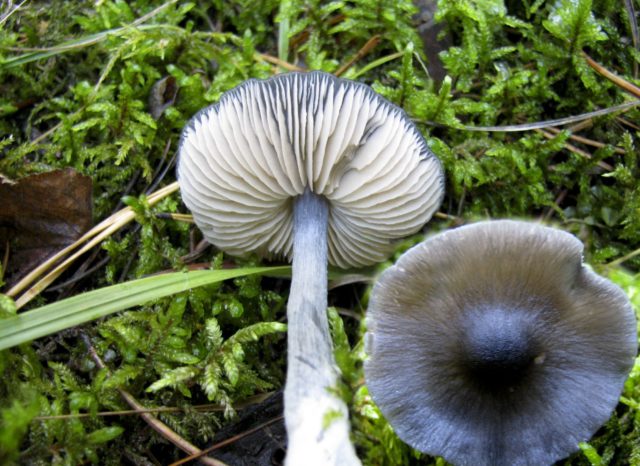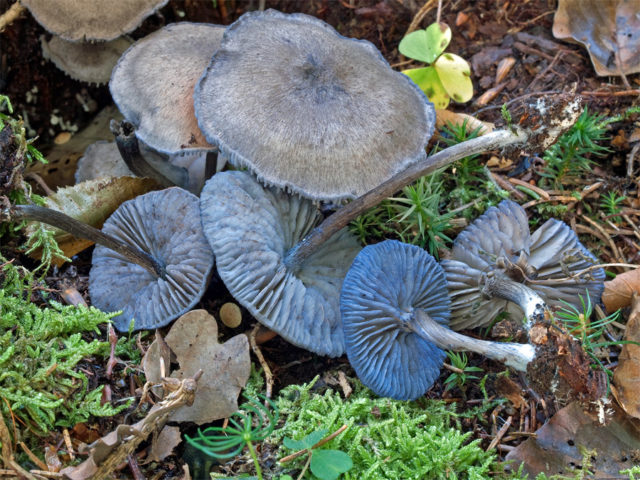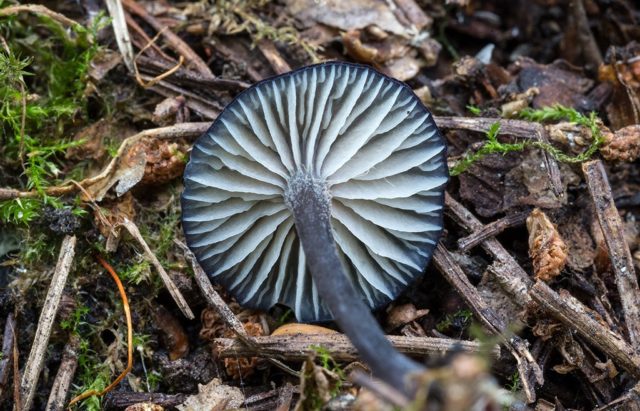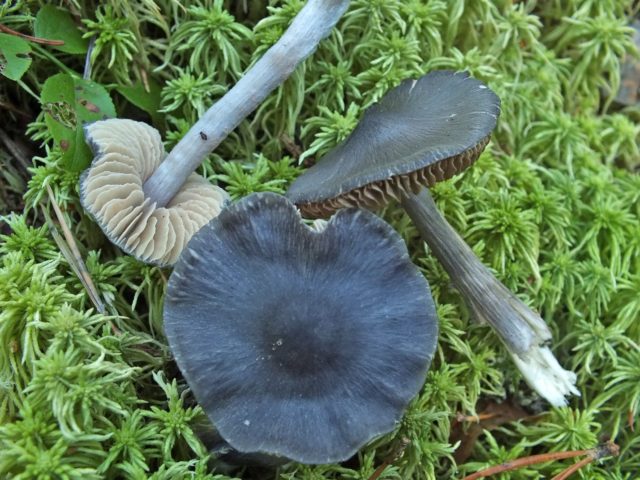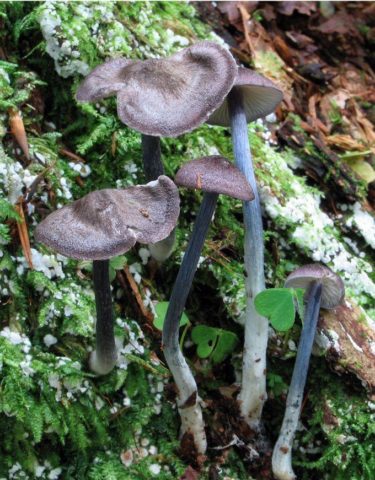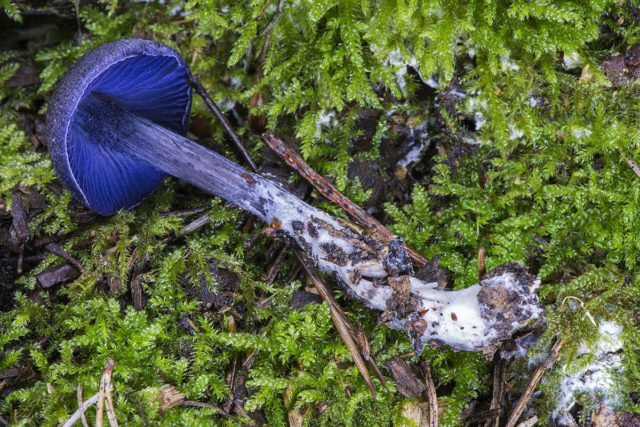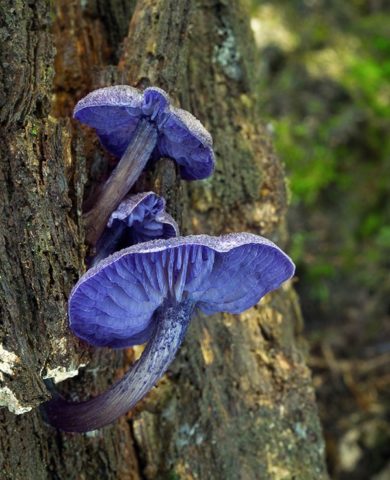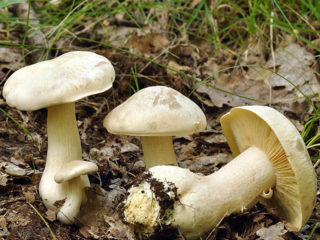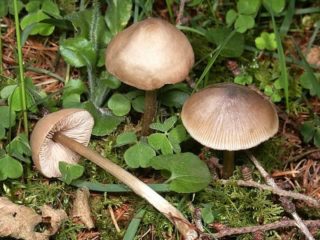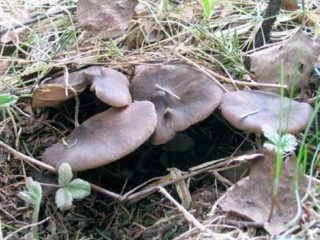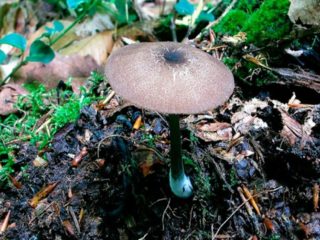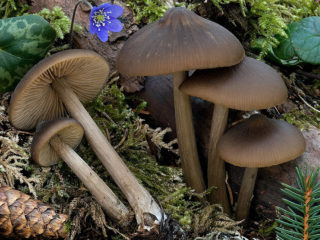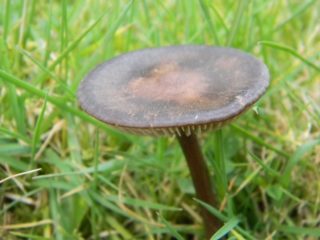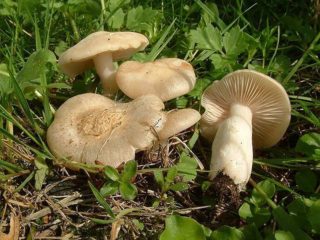Content
Entoloma bluish or pink lamina is not included in any of the 4 classification groups and is considered inedible. The Entolomaceae family consists of more than 20 species, most of which have no nutritional value.
What does Entoloma bluish look like?
The color of the fruiting body of Entoloma bluish depends on the degree of illumination and the place of growth. It can be light blue, gray with a blue tint. To one degree or another, blue is present, hence the name of the species.
Description of the hat
The rosacea is rather small in size, the average diameter of the cap is 8 mm in adult specimens. External characteristic:
- in young mushrooms, the shape is narrow-conical; as it grows, the cap fully opens;
- in the upper central part there is a bulge covered with small scales, less often concave in the form of a funnel;
- the surface is hygrophane, with longitudinal radial stripes, glossy;
- the edges are lighter than the central part, uneven, curved, with protruding plates;
- spore-bearing plates are rare, wavy, of two types: short only along the edge of the cap, long - up to the stem with a clear border at the transition, the color is first dark blue, then pink.
The pulp is fragile, thin, with a blue tint.
Leg description
The length of the leg is disproportionate in relation to the cap, grows up to 7 cm, thin - 1.5-2 mm. The shape is cylindrical, expanding towards the mycelium.
The surface is smooth, lined at the base, with a white edge. The color is gray with variations of blue or light blue. The structure is fibrous, rigid, dry, hollow.
Is the mushroom edible or not
Due to its small size and exotic coloration, Entoloma bluish does not attract mushroom pickers. The species also did not arouse interest among biologists, therefore Entoloma cyanulum has not been fully studied. In the mycological reference book, there is no description of Entoloma bluish, as a fungus of nutritional value. It was classified as inedible, but without toxins in the chemical composition. Thin blue flesh with a lack of taste and a specific repulsive odor does not add bluish popularity to Entoloma.
Where and how it grows
The main distribution of Entoloma bluish is Europe. In Russia, this is a rare species, which can be found in the Central regions of Moscow and Tula, less often in the Central black earth part in the Lipetsk or Kursk regions. It grows in an open wet area in the grass, on the moss of peat bogs, in the lowlands among reed thickets. Forms large groups from early to late September.
Doubles and their differences
Outwardly, the brightly colored Entoloma looks like a rose-colored plate, the mushrooms belong to the same species.
The double differs in the color of the cap: it is bright blue with a scaly surface, of a larger size. Plates from the moment of growth to maturity are one tone lighter than the cap. The leg is shorter, thicker in width, monochromatic. And the main difference is that the twin grows on trees or dead wood. The smell is pungent, floral, the pulp is blue, the juice is viscous. The fruiting body is inedible.
Conclusion
Entoloma bluish is very rare. It grows in hard-to-reach places on wet soil of peat bogs, among reed thickets or tall grass in lowlands. The small, blue mushroom forms colonies in early fall. Refers to inedible.
